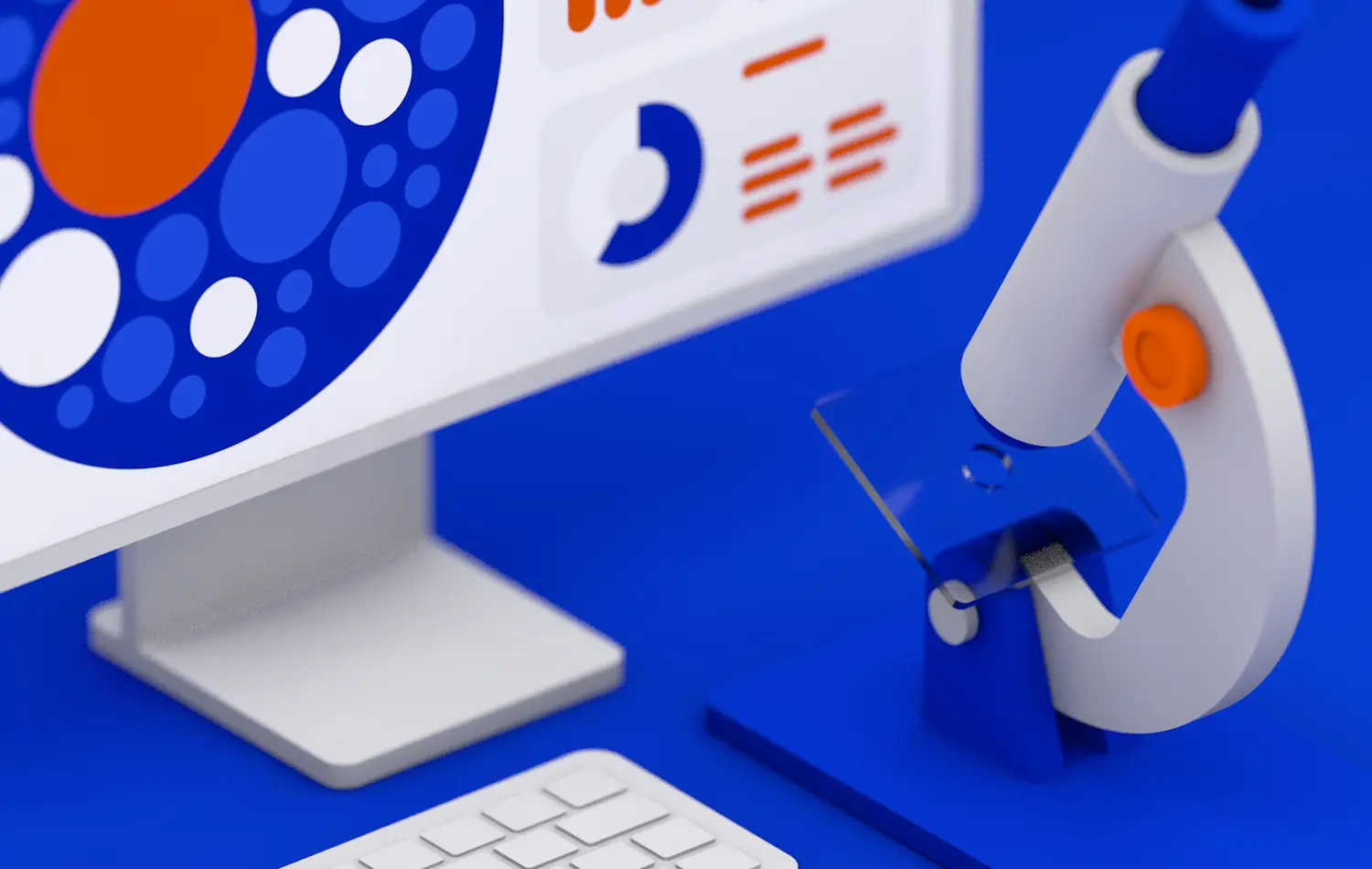
“Science isn’t complete until it’s communicated.” One of the ways to communicate in the biotechnology sector is through data visualization.
While some scientists still think of data visualization as optional, more realize it is an essential tool for revealing insights, including biological and pharmaceutical ones. But before large and complex datasets can be conveyed, it’s important to choose the right approach and tools for visual storytelling. So, we’ll start by exploring the value of data visualization tools for the biotech industry. And then, we’ll see why standard tools may not be the best option and when customization can offer more.
Benefits of using data visualization for biotech
In an industry where data is crucial, it’s not surprising to see why biotech companies use data visualization and analytics. In terms of specific benefits for bio-IT teams, data visualization tools for biotech bring in the following:
Access to diverse information sources - Relevant information related to various sources, public and multiple in-house databases
Quick descriptive, predictive, and prescriptive analytics - Visualization makes data easier to work with and understand, which translates into fast, data-driven decision-making
The ability to interact with the data - Users can go beyond standard pie, bar, or line charts by brushing, scaling, or linking the images, among many other manipulations.
Examples of biotech data visualization tools and their use cases
In the current landscape of biotech data analytics, not even the state-of-the-art visualization tools are perfect. Still, they allow researchers and decision-makers to gain deep insights into the interplay of complex parameters. Here are some examples of biotech data visualization tools that make it possible.
T-BioInfo
T-BioInfo, or Tauber Bioinformatics, is a platform that deals with big heterogeneous data and combines statistical analysis modules into pipelines. Pine Biotech developed the platform to facilitate the discovery of molecular diagnostics, small molecules, vaccines, and other treatments.
Specific areas of analysis include:
NGS data (transcriptomics, genomics/epigenetics, DNA/RNA)
Mass-spectroscopy
Structural biology
Cancer biology
Single-cell analysis
Virology
Metagenomic
Data integration and modeling (data association, data mining)
MSVTK
MSVTK is an open-source software library that offers a multiscale visualization toolkit. Through data collection and modeling, the tool helps develop prototypes and check the efficacy of proposed approaches.
The software components and widgets in the library can be biomedical projects or any application already using VTK. The Visualization Toolkit (VTK) is a previous-generation open source software used to manipulate and display scientific data.
Biowheel
Biowheel is a web-based high-dimensional data tool for biomedical professionals. It’s positioned as an interactive visualization tool suitable for people with and without programming training.
While initially developed as a tool for time-course expression data, Biowheel can visualize any tabular independent of the source and context. It enables high-dimensional biological data interpretation for different purposes: detecting data outliers, evaluating data consistencies, and discovering trends.
WEAVE2
WEAVE2 (Workbench Environment for Analysis and Visual Exploration) is an open-source interactive visualization and analysis platform. Weave Visual Analytics developed it, leveraging the features of HTML5 and JavaScript.
The biotech data visualization tool displays data in the form of maps, scatter plots, bar charts, histograms, line graphs, and more. In addition to viewing data from multiple data sources, WEAVE2 lets users highlight items on multiple visualizations simultaneously.
Charted
Charted is a simple charting tool developed by the Product Science team at Medium. It is deliberately limited in formatting and data transformation options to prioritize core features:
Creating separate charts out of data series
Re-fetching of the data to update visualizations
High-quality rendering
It’s worth looking into different options that go beyond ready-to-use tools. For example, if you’re at the crossroads about which biomedical data visualization tool to choose, Dworkz has the answer - a custom solution. Contact us to discuss your project today!
Limitations in biotech data visualization tools
While standardized data visualization tools for biotechnology are viewed as a great benefit for many organizations, not enough consideration has been given to their limitations. However, there are a number of challenges faced by the end user, particularly in terms of accessibility and usability.
In trying to wade their way through biotech data and visualization features, users come across these disadvantages:
Inaccessible to non-programmers - Not every user of visualization tools is a technical user. So, many features remain inaccessible to people outside the target group.
Manual input - This creates further issues like inconsistency in data entry, disengaged employees, and potential financial and compliance issues.
Limited functionality - With off-the-shelf software, the immediacy of use comes at the expense of some features.
Lack of quick support - Because the source code isn’t accessible to the internal team, you’ll only rely on the provider. It could take weeks for any bugs or issues to be resolved.
As biomedical data becomes more diverse, the need for tools that ensure interactive and versatile visualization is also growing. Such representation of data might only be possible through customization.
Is custom data visualization in biotech worth it?
A custom approach is a perfect match when an organization demands higher flexibility and security. Custom visualization solutions are tailored to meet specific needs. They follow the strategies that will work best in every case. Plus, such solutions remove barriers to obtaining insights and keep users engaged and productive.
Reach out to discuss your unique needs and visualize data the way you want it!


